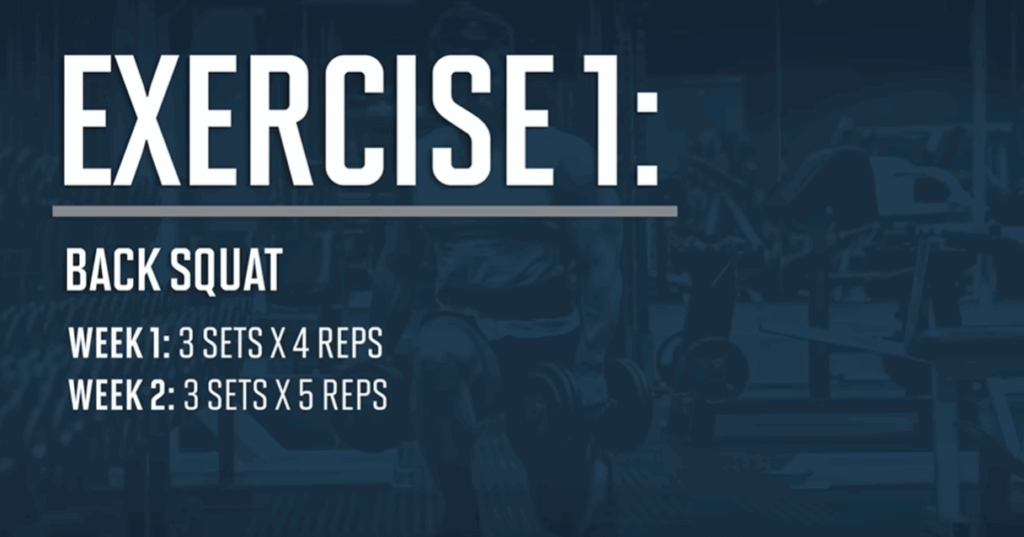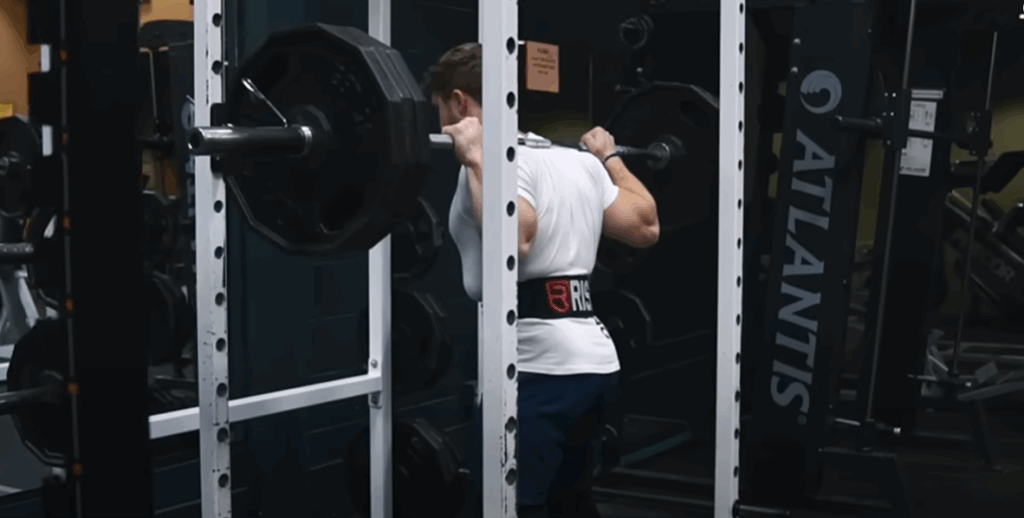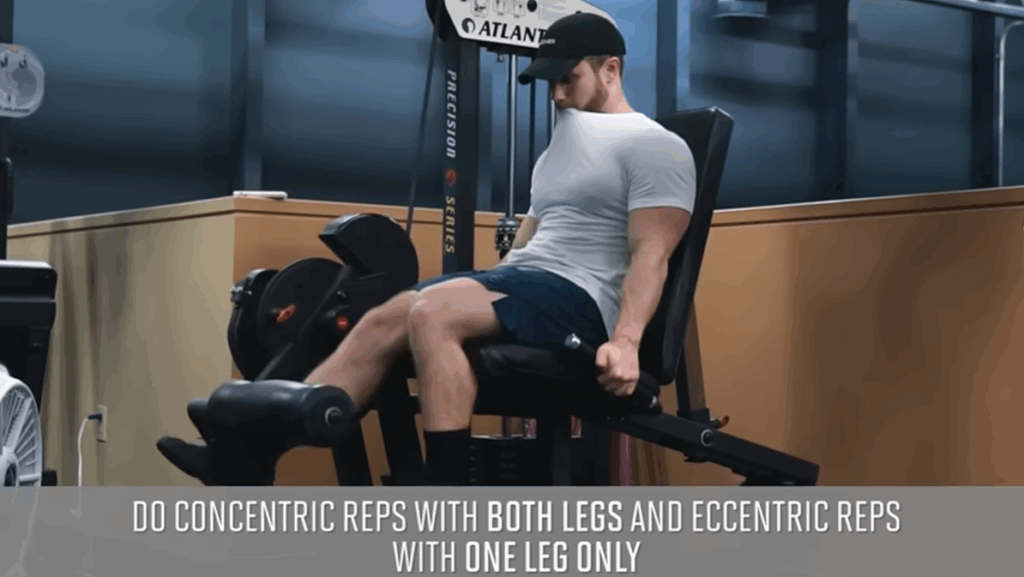If you’re ready to take your lower body training to the next level, this advanced leg workout is designed to maximize both muscle growth and strength. The program follows a high-frequency upper-lower split, with legs trained three times per week. By reducing the per-session volume and increasing frequency, you provide your muscles with a consistent growth stimulus while maintaining recovery balance.
This guide walks you through the first leg day of the cycle, explaining exercise selection, technique cues, progression strategy, and intensity methods for optimal results.
1. Warm-Up: Preparing for Maximum Performance
Before lifting heavy, you need to get your body primed. Start with 5–7 minutes of light cardio, preferably on a StairMaster or an inclined treadmill. The goal is to raise your core temperature quickly without exhausting yourself.
Follow this with dynamic mobility work and foam rolling. Focus on your hips, quads, hamstrings, and glutes. Spend 3–4 minutes cycling through leg swings, bodyweight squats, and hip openers. If you’re unfamiliar with effective lower-body mobility drills, consider dedicating an entire session to improving movement patterns before tackling heavy squats.
2. Barbell Back Squat – Strength Foundation
Sets/Reps: 3 sets of 4–6 reps (wave loading across weeks)
Tempo: Controlled descent, explosive concentric phase
The back squat remains the king of lower-body lifts for developing overall strength and muscle. Although not the ultimate glute-builder compared to hip thrusts, it provides unmatched carryover to other lower-body movements.

Form and Technique Tips:
- Bar Placement: Use a high-bar position to maintain a more upright torso, which reduces lower back strain.
- Depth: Aim for at least parallel or slightly below, with your hip crease dropping beneath your knees.
- Stance: Slightly wider than shoulder-width works for most lifters. Contrary to popular belief, stance width doesn’t significantly change quad activation—but wider stances may recruit the glutes more due to increased hip abduction.
- Bracing: Take a deep breath into your abdomen, not your chest, to create strong intra-abdominal pressure before descending.
Progression Plan:
- Week 1: 3×4 (RPE ~6)
- Week 2: 3×5 (RPE ~7)
- Week 3: 3×6 (RPE ~8, challenging but not maximal)
- Week 4: Return to 4 reps with slightly lighter loads before cycling up again.
As you progress through the program, consider experimenting with low-bar squats if you want to lift heavier loads, as most lifters can handle 5–10% more weight in that position.
3. Romanian Deadlift (Eccentric-Focused)
Sets/Reps: 3 sets of 10
Tempo: 4-second eccentric, normal concentric
The Romanian deadlift (RDL) targets the hamstrings through deep hip hinge mechanics. Slowing the eccentric portion allows you to better control the stretch and maintain constant tension, making it an excellent hypertrophy tool.
Key Cues:
- Push your hips back while keeping your spine neutral.
- Avoid locking out the glutes fully at the top to keep tension on the hamstrings.
- Focus on mind-muscle connection—you should feel the hamstrings stretch under load.
While research on eccentric overload for hypertrophy is mixed, lowering the weight under strict control helps you focus on the target muscles with lighter loads, reducing fatigue on the lower back and glutes.
4. Walking Lunge Drop Set
Sets/Reps: 3 sets of 8 + 8 (per leg)
Method: Drop set with ~50% load reduction
Walking lunges are a powerhouse for leg development, engaging the quads, hamstrings, and glutes simultaneously. Adding a drop set introduces metabolic stress—a proven driver of hypertrophy.
Execution Steps:
- Measure the distance for 16 strides (8 per leg).
- Perform the first 8 reps per leg with heavy dumbbells.
- Drop to a 50% lighter weight immediately and walk back for another 8 reps per leg.
For beginners, swap the lighter dumbbells for bodyweight reps until you adapt to the intensity.

5. Leg Extension – Unilateral Eccentric Overload
Sets/Reps: 3 sets of 10
The leg extension isolates the quads, and adding unilateral eccentric work overloads them beyond their usual limits.
How to Perform:
- Use both legs for the upward (concentric) phase.
- Lower the weight with one leg only to maximize eccentric loading.
- Alternate legs every rep, or if you have one weaker quad, dedicate all eccentrics to that side first.
Because eccentric strength is 20–50% higher than concentric strength, this method lets you safely push your quads harder without risking poor form.
6. Lying Leg Curl – Eccentric & Constant Tension Combo
Sets/Reps: 2 sets of 8 + 12
Method: Mechanical drop set
Alternate between two intensity techniques in one set:
- 8 reps with a slow 3-second eccentric phase.
- Without resting, perform 12 partial reps in the mid-range to keep constant tension on the hamstrings.
This combination floods the muscle with metabolic stress, making it an effective hamstring finisher.
7. Superset: Calves & Abs
A. Straight-Leg Calf Raises (on Leg Press)
Sets/Reps: 3 sets of 12–15
The seated leg press setup allows you to maintain a straight knee, mimicking a standing calf raise. Focus on a full stretch at the bottom and a strong squeeze at the top.
B. Cable Crunches
Sets/Reps: 3 sets of 12–15
Instead of hinging at the hips, flex your spine by rounding your lower back at the bottom of the movement. Think of compressing your abs like an accordion for maximum contraction.
8. Program Structure and Progression
This leg workout is part of a nine-week wave-loading hypertrophy program:
- Three weeks of progressive overload (RPE increases weekly)
- One deload-style week with reduced effort
- The cycle repeats three times
Training frequency: 6 days per week (3 upper + 3 lower)
For those limited to 5 sessions weekly, modifications are possible by alternating upper and lower days.

Final Thoughts
This program balances strength-based lifts like squats and RDLs with hypertrophy-specific intensity techniques such as eccentric overloads and drop sets. If you’re looking to bring up lagging quads or hamstrings, the combination of controlled eccentrics and high-frequency training provides an excellent stimulus.



